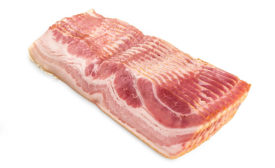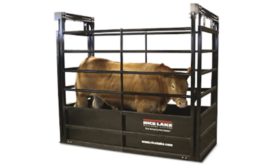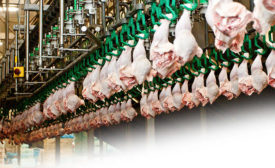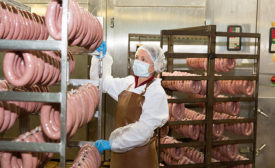Meat and Poultry Processing
2018 American Cured Meat Championships
2018 ACMC: BBQ Sausage (Specialty Class)
Interview with Dr. Dustin Boler of the University of Illinois
November 1, 2018
2018 American Cured Meat Championships
2018 ACMC: Smoked Turkey Class
Interview with Dr. Liz Boyle of Kansas State University
October 30, 2018
State of the Industry 2018
State of the Meat & Poultry Industry Workforce 2018
Baiting the employment hook: Long-term labor issues won't be resolved without processors improving their tactics to attract and retain workers.
Read More
2018 American Cured Meat Championships
2018 ACMC: Large-Diameter Luncheon Meat Class
Interview with Dr. Ryan Cox of the University of Minnesota
October 25, 2018
Supply Chain
Ensuring safety, quality and transparency through blockchain technology
New tech on the 'block'
Read More
State of the Industry 2018
State of Animal Handling 2018
Targeting humane solutions: A look at animal welfare in the meat and poultry industry
Read More
Processing Tech
Tight labor market pushes processors toward automation of trimming and deboning operations
Not in the 'manual'
Read More
Employee Matters
Addressing workplace ergonomics in the meat processing industry
Protecting your 'industrial atheletes'
Read More
Stay ahead of the curve. Unlock a dose of cutting-edge insights.
Receive our premium content directly to your inbox.
SIGN-UP TODAYCopyright ©2024. All Rights Reserved BNP Media.
Design, CMS, Hosting & Web Development :: ePublishing











